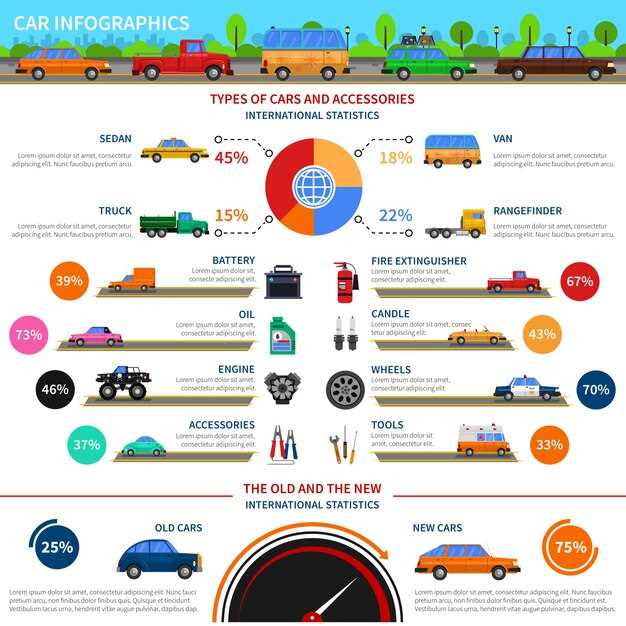
When it comes to trailers, one of the most critical factors to consider is the weight rating. Understanding the various types of weight ratings is essential for ensuring safe and efficient towing. This encompasses the maximum allowable weight a trailer can handle, which includes the weight of the trailer itself along with any additional cargo. Misjudging this rating can lead to serious safety risks on the road.
The trailer weight rating is typically specified by the manufacturer and is categorized into several classifications, including Gross Vehicle Weight Rating (GVWR), Gross Axle Weight Rating (GAWR), and more. These ratings inform the user of how much weight the trailer can safely transport, preventing overloading that could compromise both the trailer’s integrity and the towing vehicle’s performance.
Moreover, understanding your trailer’s load capacity is not just a matter of adhering to guidelines; it has real-world implications for safety, maneuverability, and legal compliance. Inadequate attention to these ratings can result in damage, accidents, or potential fines. By grasping the intricate details of trailer weight ratings and load capacity, you can make informed decisions that enhance your towing experience and ensure responsible usage.
Decoding Trailer Weight Ratings: GVWR, GAWR, and Curb Weight

Understanding trailer weight ratings is crucial for safe towing. The Gross Vehicle Weight Rating (GVWR) indicates the maximum weight a trailer can safely handle, including its own weight and the weight of cargo. It is essential to adhere to this rating to prevent safety hazards and damage to both the trailer and the towing vehicle.
The Gross Axle Weight Rating (GAWR) focuses on the weight limitations of individual axles. Each axle on a trailer has a specific weight capacity, contributing to the overall stability and performance. Distributing weight evenly across the axles is vital to maintaining control and preventing wear on tires and suspension systems.
Curb weight refers to the weight of the trailer when it is empty, without any cargo or additional equipment. Knowing the curb weight helps owners calculate the available load capacity, allowing them to maximize usage without exceeding the GVWR. By understanding these weight ratings–GVWR, GAWR, and curb weight–trailer owners can ensure safe and effective towing practices.
Determining Your Trailer’s Load Capacity for Safe Towing

To ensure safe towing, understanding your trailer’s load capacity is essential. This capacity is influenced by the Gross Vehicle Weight (GVW), which represents the total weight of the trailer when fully loaded. Knowing the GVW allows you to determine the maximum weight your trailer can safely carry.
The first step in determining load capacity is to check the trailer’s specifications, typically found on a label attached to the frame. This label will indicate the Gross Vehicle Weight Rating (GVWR), which is the maximum allowable weight for the trailer including cargo, fluids, and any additional accessories.
Next, subtract the weight of the trailer itself, known as the dry weight, from the GVWR. The resulting figure is your trailer’s payload capacity, which is the maximum weight you can load onto the trailer without exceeding safe limits.
It is crucial to consider the weight distribution of your load. An uneven load can affect towing stability and increase the risk of sway, making it imperative to secure cargo properly and evenly distribute weight across the trailer.
Finally, always keep in mind the combined weight of your vehicle and trailer when towing. Exceeding the towing capacity of your vehicle can lead to braking issues, decreased handling, and increased wear and tear on both vehicle and trailer.
By accurately determining your trailer’s load capacity and adhering to these guidelines, you can ensure a safer towing experience, protecting both yourself and others on the road.
Common Misconceptions About Trailer Weight and Towing Limits
Many trailer owners and operators operate under several misconceptions regarding weight ratings and towing limits. One prevalent myth is that the towing capacity of a vehicle is solely determined by its engine size. In reality, several factors, including axle ratings, transmission, and suspension design, also play a critical role in determining how much weight a vehicle can safely tow.
Another misunderstanding is the idea that the Gross Vehicle Weight Rating (GVWR) and the trailer’s weight rating are interchangeable. While both are essential metrics, GVWR pertains to the maximum safe weight a vehicle can carry, including the trailer and its cargo. The trailer’s weight rating specifically focuses on the maximum weight the trailer can safely handle. Confusing these two can lead to overloading, which is dangerous.
Furthermore, many believe that if a trailer appears structurally sound, it can carry any load without issue. This is misleading, as every trailer has a specific weight rating that must not be exceeded. Overloading a trailer can result in equipment failure, loss of control, and potential accidents.
Another common misconception is that trailer brakes are optional if the weight is below a certain limit. While it might be true that smaller trailers may not require brakes under specific conditions, this does not mean they are not advisable. Proper braking systems enhance safety and control, especially in emergencies.
Lastly, some may think that upgrading the towing vehicle alone can safely increase towing capacity. While a more powerful engine may help, the entire towing setup, including the hitch, suspension, and braking systems, must be rated appropriately to ensure safety and compliance with weight limits.





